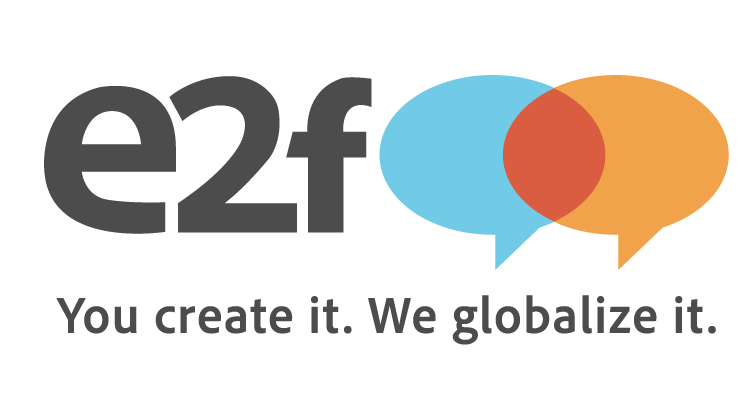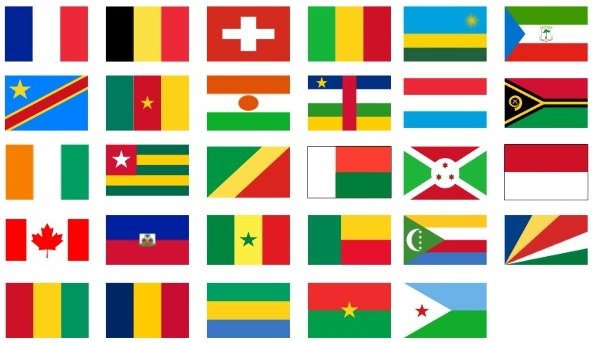We Hear You – But do you understand?
Siri, Alexa, Cortana, Bixby, Xfinity, BMW, Mercedes, Citicorp, Bank of America, and many more are incorporating voice technology into their products. Find out what role we play in this process.
Spanish comes in different flavors!
Congratulations! You’re ready to take the pivotal step of translating your content into Spanish—the world’s second most widely spoken language. Making your content accessible to a Spanish-speaking audience allows you to significantly expand your audience, boost engagement, and ultimately, grow your business. But even within the Spanish language, speech patterns, words, and expressions can meaningfully vary across different Spanish-speaking regions.
The Importance of Context in Translation
This is a seemingly straightforward request, variations of which are all too common among linguists—myself included. Though perhaps a bit curt, this request brings to light a frequent issue that all translators and reviewers face: the lack of context.We often see ambiguous abbreviations, unclear phrasing, or even just have a single word, the meaning of which is unclear in isolation.
How long will my first localization project take?
If you’re new to localization, you may be wondering: how long will my first localization project take? Even if you’ve been translating your content for a while, you may be curious why your first project took longer than those that followed. Let us explain. When you’re first engaging a professional language services provider, it’s helpful to think of your first project as the foundational steps in a budding relationship. For the relationship to be successful in the long term, it must have a solid footing.
What is Terminology Management?
To establish a successful global brand, you need to address your audience in a clear and consistent manner—in all languages. Your content, products, and services are unique—and, often, designed and developed with a specific target market in mind. By identifying, defining, and accurately translating the specific terminology used throughout your messaging, you can ensure your brand resonates with consumers across the globe.
Easy Guide to Choosing Languages to Translate Into
Of all the questions we get asked by developers, this is probably the most common one. It’s the million dollar question (though no localization should ever cost that much!), and there’s never going to be an easy answer to all of the questions surrounding your choice.“How do I know which languages my users speak? What if I pick the wrong languages? How do I narrow it down?”
Getting Ready for Translation: Glossary and Style Guide
Are you looking to translate and localize your content? Then you should prepare a glossary and style guide prior to starting your first project. This will help you keep consistency and accuracy across your translations.The style guide will explain your brand’s tone of voice, style, grammar, and any other aspects that you think are worth considering to approach your audience.
5 Linguistic Differences Across French-Speaking Regions
When translating your content into French, it’s essential to account for linguistic variances across different French-speaking regions. The meaning of a French word in France, for example, could vary drastically from its meaning in Québec.Failure to account for regional language differences could yield errors and inaccuracies in your content, which negatively impact your brand’s credibility. As French comes in different flavors, here are some examples of French words and phrases that vary in meaning across regions
French comes in different flavors!
Congratulations! You’re ready to take the pivotal step of translating your content into French—the only language other than English that’s spoken on all five continents.Making your content accessible to a French-speaking audience allows you to significantly expand your audience, boost engagement, and ultimately, grow your business. But even within the French language, speech patterns, words, and expressions can meaningfully vary across different French-speaking regions.
5 Linguistic Differences Across Spanish-Speaking Regions
When translating your content into Spanish, it’s essential to account for linguistic variances across different Spanish-speaking regions. The meaning of a Spanish word in Spain, for example, could vary drastically from its meaning in Argentina. Failure to account for regional language differences could yield errors and inaccuracies in your content, which negatively impact your brand’s credibility. As Spanish comes in different flavors, here are some examples of Spanish words and phrases that vary in meaning across regions.
Should I translate my content into Hindi?
It’s no secret: translating your content into new languages results in boosted traffic and engagement. People crave content in their native languages, and tailoring your content to serve a global audience is among the most powerful growth hacks.
But once you’ve tackled the question of whether to translate your website (spoiler: the answer is yes), you must consider into which languages you’ll translate. Obviously, the more languages covered, the wider your reach. But as translating into too many languages can be costly, you must think carefully about which languages to target.
Translation vs Localization: What’s the Difference?
If you’ve been using translation and localization interchangeably, you’re missing out a crucial distinction.
While translation is relatively straightforward—typically defined as a word-for-word conversion of text from one language into another—localization is far more nuanced.
You can’t have localization without translation: the process encompasses the conversion of text into a new language. But unlike translating, localizing also demands an attention to cultural considerations, as well as your content’s tone and style. Rather than simply converting the exact text, you’re refining your message to cater to your target market.
How to make your content translation-friendly
You’re thinking of bringing your content to the international audience?
Our recommendation is – even before you start looking for a translation provider, a translation management platform, quotes and bids etc. – to prepare your content for localization. Your English copy, what we call a “source”, will be translated into multiple languages, so help your translators (and, ultimately, your end users) by providing them with a source text as clean and disambiguous as possible.
The importance of international AI: overview from a revealing tech talk
It’s the hottest buzzword in the technology space: artificial intelligence. And for good reason. As computers become more adept at mimicking human processes, artificial intelligence—or AI—is increasingly influencing the day-to-day lives of consumers.
Yet as AI reshapes the way we conduct business across the globe, mainstream AI efforts are still based on English databases. Even the most advanced AI capabilities remain focused on English-centric product performance.
How to avoid context-related translation errors
The value of high-quality translations has been proven time and time again. Yet there’s a crucial issue with their execution, that, even in our age of almost almighty technology, has yet to be resolved.
The issue: context—or rather, the lack of context that’s being provided to translators.
There are enormous benefits to be gained by providing your linguistic team with style guides, glossaries, screenshots—as many reference materials as possible. But even with all these materials provided, the amount of context available is limited by the translation process itself.
Machine Translation: how does it work?
Translators increasingly need to be well-versed not just in linguistics, but also in technology. Just as the worlds of typography, accounting, medicine, and a myriad of other industries were revolutionized in recent decades by computers and information technology, translators need to understand the evolving impact of technology on their own profession.
In the future, the greatest divide that may develop will be between technologically-fluent translators —who understand the technology revolutionizing their profession — and those who limit their interests exclusively to the field of linguistics.
Managed Services: An Emerging Translations Trend
I recently sat down with Michel Lopez, the CEO of e2f, to discuss an emerging trend in the language services industry: managed services.
Peter Corless (PC): e2f is now offering managed services. What are they, and why is it important to know about this trend?
Michel Lopez (ML): The traditional model of the language services industry is an outsourced, offsite vendor model, where the client sends trials to localization companies around the world, and the vendor sends files back. More and more, especially in the gaming and tech industry, clients are requesting translators and editors, testers, as well as project managers, work onsite at the client’s location. At first this was just individual contract employment, but now the entire department is being outsourced, yet still remaining on-site.
How to “transcreate” your marketing materials to serve a global audience
Dear Marketers,
When publishing a new blog post, website update, or important press release for your international users, there’s a key step you can’t afford to neglect: translation / transcreation / copy adaptation.
This step is far more involved than simply seeking a word-for-word translation from your translation services provider, and hoping your international users will benefit.
Marketing content requires attention that is distinct from your app or website’s continuous translation, which typically involves ongoing translations by a single linguistic team. These materials requires the expertise of a linguistic team that specializes in such creative translation, or transcreation as it’s called in the localization industry.
Marketing Strategies for Globalization Globalization 0.1: The Rise of the Multinationals
In 1602, the Vereenigde Oost-Indische Compagnie (VOC), literally translated as the United East India Company, but better known in English as the Dutch East India Company, was founded as the world’s first transnational, publicly-traded company. Granted a monopoly charter by the nascent rising Dutch Republic, the VOC logo became recognized internationally, bringing spices into Europe, while exporting all manner of manufactured goods to East Asia and the Pacific.
Since that time to the present, companies operating internationally have wrestled with how precisely to structure and strategize their global efforts. How much should be left to the corporate headquarters? How much should devolve to local control? How do you create a mutually-beneficial, productive relationship across all levels and regions of the organization?



















